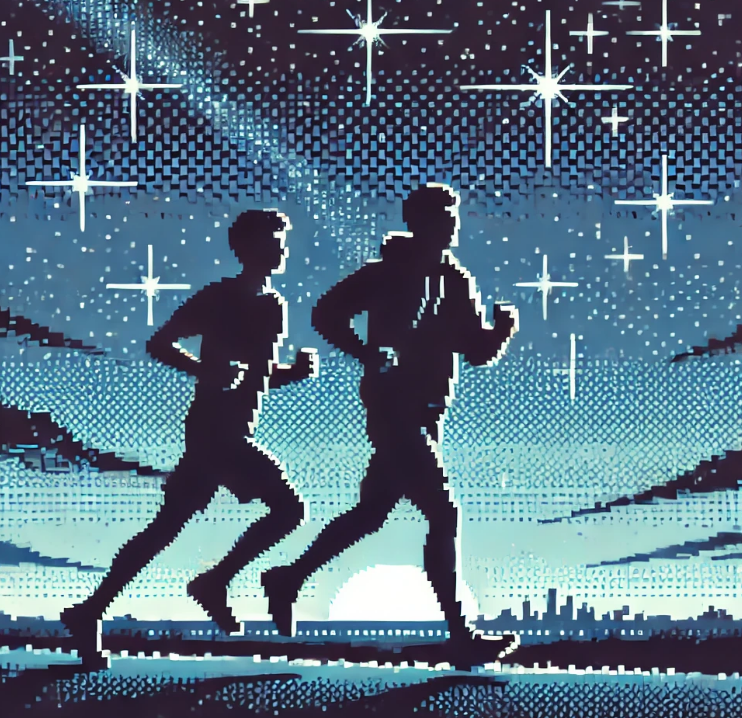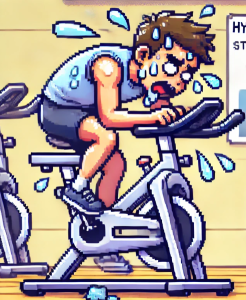
What Happens When Cities Embrace Night Running?
Did you know exercising after dark can reduce anxiety by up to 30%? While most people think of workouts as a daytime activity, an exciting trend is transforming urban nights into vibrant hubs of health. Welcome to the world of night running and cycling, where health, community, and urban planning collide.
Night Fitness: More Than Just a Trend
As our lives become busier, many people struggle to squeeze in daytime workouts. But rather than skipping exercise altogether, a growing number of city-dwellers are embracing night fitness. New research shows that nighttime running and cycling aren’t just convenient—they’re packed with unexpected benefits. These workouts can help lower blood pressure, improve heart health, boost metabolism, and significantly enhance sleep quality.
But why are these activities exploding in popularity now?
Health, Work, and Social Media: Why Night Exercise is Booming
Several factors drive this nocturnal fitness wave. First, increased health awareness, often fueled by social media platforms like Strava and Nike Run Club, encourages people to stay active despite their busy schedules. These apps don’t just track your runs—they foster a sense of community, motivate through friendly competition, and inspire others by showcasing nighttime fitness adventures.
Work schedules are another major driver. As jobs become more demanding and flexible work patterns become common, evening exercise offers the perfect stress relief. Surveys indicate that over 60% of urban residents in major Asian cities now prefer exercising at night due to daytime constraints.
For people in high-stress jobs, night fitness isn’t just convenient—it’s therapeutic. Running and cycling at night have been shown to significantly lower anxiety and stress. Imagine ending your hectic day with a calming run beneath city lights, turning stress into serenity.
The Surprising Health Benefits of Nocturnal Exercise
Night running and cycling offer notable physiological benefits. Engaging in these activities can boost your metabolism by 12–15%, increase cardiovascular resilience, and notably improve your sleep quality. Exercising moderately at night, particularly more than 90 minutes before bedtime, can increase deep sleep by up to 20 minutes. This enhanced sleep efficiency directly benefits mental health, reducing anxiety levels significantly compared to morning workouts.
For individuals dealing with joint issues, night cycling provides a low-impact yet highly effective alternative to running, easing strain on the knees while still promoting metabolic health and muscle strength.
But nighttime exercise isn’t without its challenges. Air pollution, particularly in cities, can offset some health benefits. Surprisingly, air quality often worsens at night, particularly around peak traffic hours, potentially putting exercisers at risk. This calls for thoughtful planning of exercise routes and timing.
The Crucial Role of Urban Green Spaces
Urban green spaces—parks, greenways, and trails—have become essential for night fitness enthusiasts. Enhanced lighting, improved safety measures, and upgraded recreational areas not only attract more people to exercise but also foster community spirit. Cities like Chengdu in China have successfully integrated nighttime-friendly greenway networks, drastically increasing nocturnal activity and improving overall public health.
The relationship between night fitness and urban green spaces is mutually reinforcing. As more people engage in night fitness, cities respond by enhancing infrastructure, creating a healthier, safer environment for everyone. This symbiosis doesn’t just benefit public health—it also boosts local economies, stimulates nighttime businesses, and promotes sustainability.
Challenges and Solutions for Nighttime Exercise
Despite its popularity, nocturnal fitness faces significant challenges, including safety concerns, inadequate infrastructure, and inequitable access to green spaces. Poor lighting and the potential for crime discourage many from participating. Air pollution remains a hidden health threat.
But solutions exist: enhancing nighttime infrastructure with smart lighting systems, creating green buffers to filter air pollution, and investing in equitable access to green spaces can make night exercise safer and more sustainable for everyone. Smart apps providing real-time air quality data and volunteer patrols can further enhance safety, encouraging broader participation.
The Future: Smart Cities Supporting Health
To sustain and enhance the growth of night fitness, cities must prioritize smart, data-driven urban planning. Integrating big data to optimize fitness paths, monitoring air quality, and improving lighting are practical first steps. By addressing these issues, cities can create healthier, safer, and more inclusive environments.
Imagine cities where night running tracks glow softly, illuminated paths guide cyclists safely through clean-air corridors, and technology seamlessly enhances your workout experience. This vision is achievable—and it starts now.
Join the Conversation
Night fitness offers a unique opportunity to rethink urban living. As this trend continues to grow, public health officials, urban planners, and communities must collaborate to maximize benefits and minimize risks.
What would encourage you to start running or cycling at night? How does your city support—or fail to support—nighttime fitness? Share your thoughts and experiences below!
Act Now – Public Health Can’t Wait!
The future of public health is being shaped right now. Stay informed with weekly expert insights and take action where it matters most. Subscribe for free today!
📢 Time is critical! Share this blog now and rally others to join the movement.



